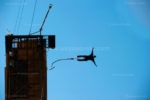Raghu Rai: Bangladesh War and Lost Treasures.

When Rajiv Gandhi was assassinated there were pictures of him blown into pieces. If I was there I would not take the photos that way. I am not condemning anyone else’s work -but at the same time that is not the way I would do things. I would like it to be more symbolic and take photos that bring out the suffering in a subtle way not the brutal way’’ , he says.
Taaza-Khabar: A Nation of Newspaper Readers
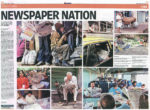
Wherever he went in India, photojournalist Sanjay Austa, found people in rural and urban areas devouring the daily newspaper. Even in metros, where a large number of people use public transport. It was a stark contrast to what he had found abroad, in countries like the US, where people preffered reading books.
‘Let Things Unfold’ – Magnum Photographer Steve McCurry

Steve McCurry however has an unabashed fascination for Asia. Africa comes a distant second. His images from these developing countries has invoked awe in the viewer, showered a kind of benediction on the subjects and contributed immensely to our knowledge of some of the lesser known cultures from these parts.
Through an Art Student’s Eye.
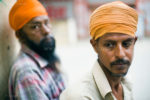
Its always intriguing how the audience interpret your work- whether its a poem, a book, a film or photographs. Surfing the internet, I found this video presentation on three of my photo-essays by an art student in the US.
Why don’t Indians Read?

I believe, one of the main reasons why we don’t read in India is because historically in the East the exploration has always been within. If you want any answers you look within rather than without.
Interview in Kyoorius Magazine

Sanjay Austa is a name to be reckoned with in the world of photojournalism in India. Austa started out as a journalist and gradually switched to photography. His first assignment as a photojournalist was an ardous expedition to Kanchenjunga where he documented the indian army’s climb to the summit.
Austa asserts that for a photojournalist the story behind a photo is every thing, ”Most of the photo-essays I work on are stories which I think are important to me…
Safdarjung’s Tomb. The Flawed Mughal Monument

The main dome itself seems a bit out of place compared to the domes of other Mughal Mosoleums. The domb here is somewhat extended at the top giving it the ‘onion’ look. The dome and other places where marble is used has a rough patchwork look to it. Thats because most of the marble used in Safdarjung Tomb was marble plundered from other tombs-most notable the tomb in Nizamuddin of Abdul Rahim Khan-e-Khana, Akbar’s protege,
An Interview with Documentary Photographer Sanjay Austa

Sanjay Austa is a Delhi based documentary photographer who is widely published in International Media including the Wall Street Journal, National Geographic Traveller, The Sunday Guardian, Departures, Centurion, Mint-WSJ, Outlook Traveller etc. His photo-feature on the 1984 anti-Sikh Delhi riots was exhibited in California and UK by various human rights groups in 2009 and 2010 respectively.
Nainital- India’s Lake District.
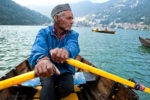
Many years ago when I visited Nainital for the first time , it was a relief to see the lake so polluted . If you belong to a hill station like me, you tend to look at another hill-station with a sense of competition. My hometown, Shimla, I happily concluded, is after all the best hill-station in India.
But on a recent visit to Nainital, I was astonished to see the Naini Lake far from the dump it was many years ago. It was all spruced up and crystal clean. There was no longer any debris floating on its surface and the horrid smell had gone. I had to reluctantly admit that Nanital is possibly India’s most beautiful hill station.
A Week in the Arctic

Whenever I get an invitation to visit a cold place I am generally not too excited. I was born in the foothills of the Himalayas (Himachal Pradesh) therefore snow, mountains, and high altitudes generate feelings of home not wanderlust. But an invitation to visit the Arctic was different. I had never crossed the 66 degree latitude for one and the opportunity to relive your childhood storybook fantasies of reindeers-rides and huskies sledges is too hard to resist.
Flirting With History. The Ruins of Farrukhnagar
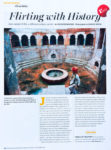
But all this seems distant on the short drive along double-barrelled Basai Road, which makes its way through the villages of Dhankot and Chandu and past Sultanpur Bird Sanctuary, undulating through multi-coloured fields of mustard, wheat and marigolds. The drive is a pleasure; the road is in good condition and lined with fruit sellers peddling seasonal wares right from the orchards. Farmland lines the road, retreating into gentle hillocks that mark the beginning of the Aravalli Hills. Farrukhnagar appears in a traffic jam of lorries, buses and cycles resembling most small Indian towns until one reaches the old quarter with its distinctive Mughal architecture.
Are all Editors Visually Illiterate?
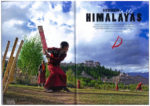
Celebrated Indian Photographer Raghu Rai has often said that newspaper and magazine editors are visually illiterate. He should know. Rai spent much of his photography career working for newspapers and magazines. I started my career as a journalist too and never understood the importance of photography in a paper. I especially did not understand why my newspaper would spend so much money sending a photographer with me on travel assignments. He just has to press the button I thought.
How Photographers get their Shots and Miss the Picture.

Does photography make you see more – as is popularly believed – or does it sometimes make you wear blinkers to the world around you? Photography of course should make you see and absorb more and this is what we all believe but I think it can do just the opposite. I feel photographers are so busy with the visual assimilation of what is at hand that they don’t (and perhaps can’t) care much about what it is they are photographing. They are not so much interested in understanding the subject as they are in `capturing’ it.
From Passion To Profession
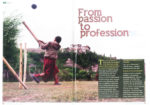
Every assignment brings its own challenges. The trick is to satisfy the client who hires you without compromising on what you think are good pictures. As a photojournalist I am mostly photographing strangers. The challenge for me is to make them open up to me so I can get a unique perspective to their lives.
Jim Corbett National Park- You Don’t come here for the Tigers.
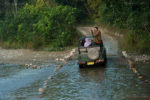
But it is not just my resort. Joining the chorus are many others. I can hear the distant boom of the music (Sheela Ki Jawani) across the forest valley well after light out. Tourists drink and dance till wee hours of the night. And in the morning they don’t care too much if they miss the safari.
They lost their childhood to the 1984 Anti-Sikh Riots
In a moving photo documentary, the children of the horrific October 31-November 1-2, 1984 riots narrate personal tales bound together by the common themes of violence, loss and the death of their childhood, reports Sanchari Bhattacharya.
Twisted Philanthropy of the Maharaja of Jodhpur.

It is touted that the Umaid Bhawan Palace was built as a drought relief measure by Maharaja of Jodhpur Umaid Singh. The idea was to make a luxurious private residence for the Maharaha in order to create employment for the starving people of Jodhpur. I find it ironic. Imagine a man thinking of making a 347 room luxurious villa for himself out of the misery of the people is he supposed to serve. Surprisingly the Maharaja is glorified till this day as a philanthropist for his `noble gesture’. The moment you enter the Umaid Bhawan a large plaque informs you about this `generosity’.
Forty and Done Aging Sex-Workers, India
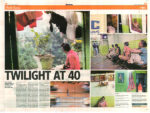
I visited the kothas several times over the years and realized that the moment the sex-workers cross forty they are virtually done for. The clients don’t come to them, their families don’t want them and even the media doesn’t care for their sound bytes anymore. In the red-light districts of India the elderly are relegated to the lowest hierarchy. With no livelihood they are expected to clean, wash and run errands for the younger women in the kothas if they want food and shelter. Most of them suffer from many venereal diseases but they have hardly any money for treatment or medicines.
Wicket worship : ‘Gully’ Cricket- Cricket in our Backyards.
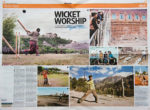
Sanjay Austa’s ongoing photo series Gully Cricket: Cricket in Our Backyards, portrays the game as it’s played in the monasteries of Ladakh and on the beaches of Kanyakumari: Mint
Wide Angled in Majuli, Assam

If you are photographing in Assam for the first time like I was, you would do well not to carry a heavy long-angled zoom. Everything is so vast here that it wont fit your frame unless you carry a wide-angled lens in your camera bag. In Kaziranga National Park the rhinos often breach that invisible man- animal line and come close enough to ram your gypsy turtle. For this reason they send an armed guard with every three gypsies to scare the rhinos with blank shots.
Arabian Nights in Bedouin Tents- Wadi Rum
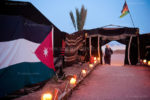
If you visit Wadi Rum in Jordan, a night’s halt is a must . Not just for the stars that shine so lustrously in the desert sky but for the exotic and authentic Arabian experience it accords. Thankfully there are no hotels in this desert so the only way you can have a lay over here is in bedouin-like camps. From the food to the interiors, the camps compete with each other in giving the best bedouin experience.
Rock-climbing in Wadi Rum- Jordan
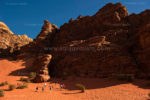
Known as `Valley of the Moon’ Wadi Rum in Jordan is not just a nature lover’s moonscape. Its also a great place for sport aficionadas. The sheer cliffs and escarpments of Wadi Rum desert offer enough challenge to the hardiest of climbers. No wonder serious mountaineering and trekkers flock to these huge sandstone mountains all the year around.
